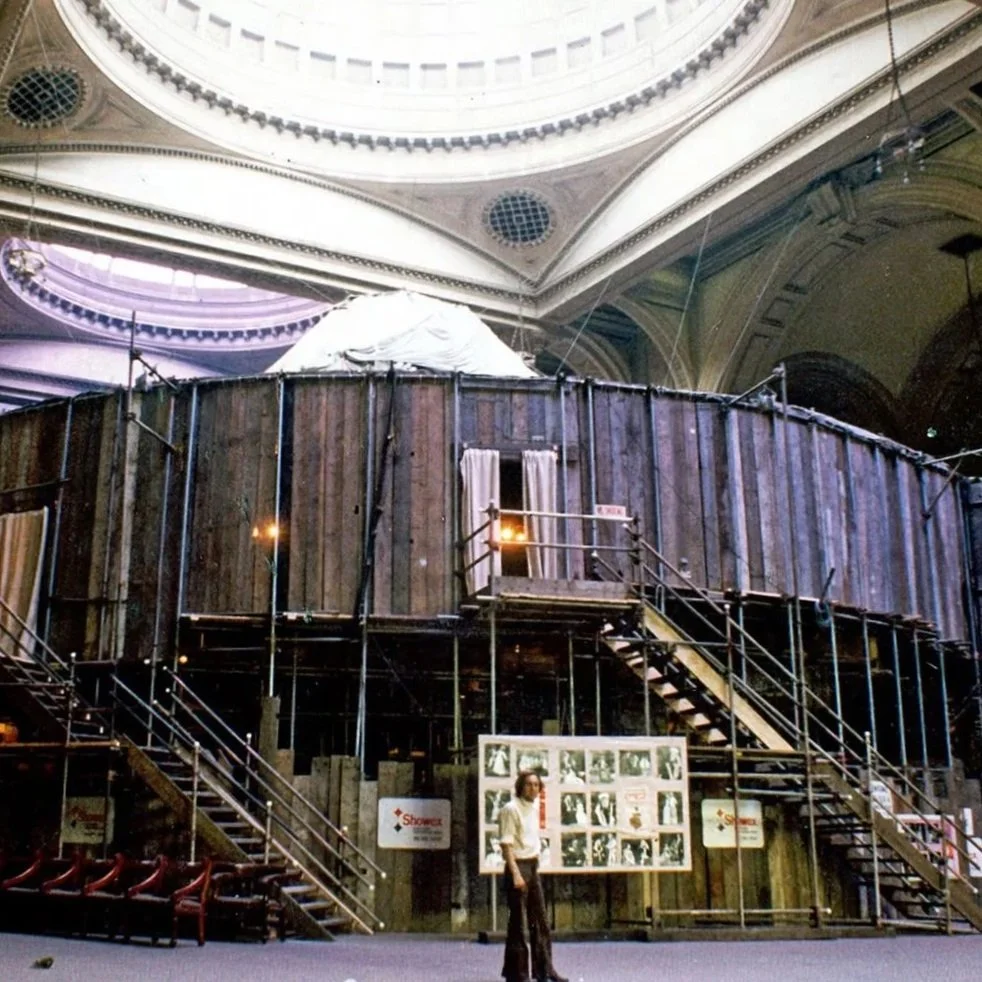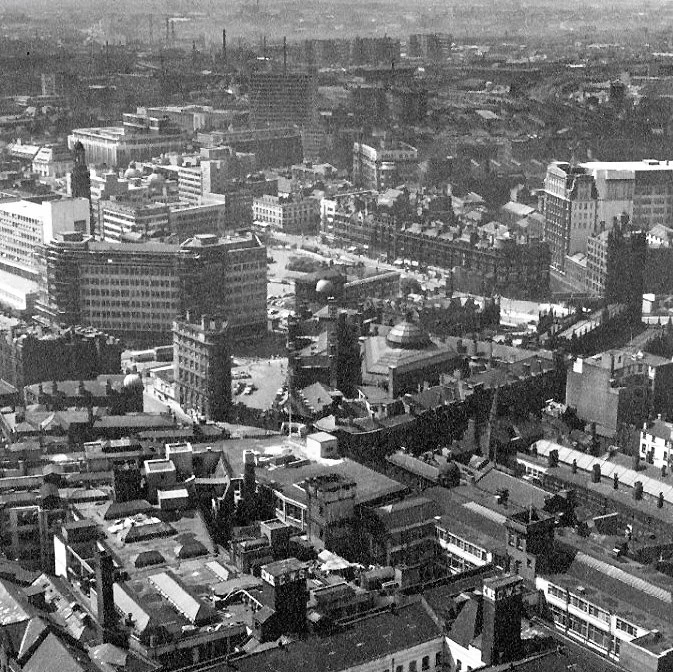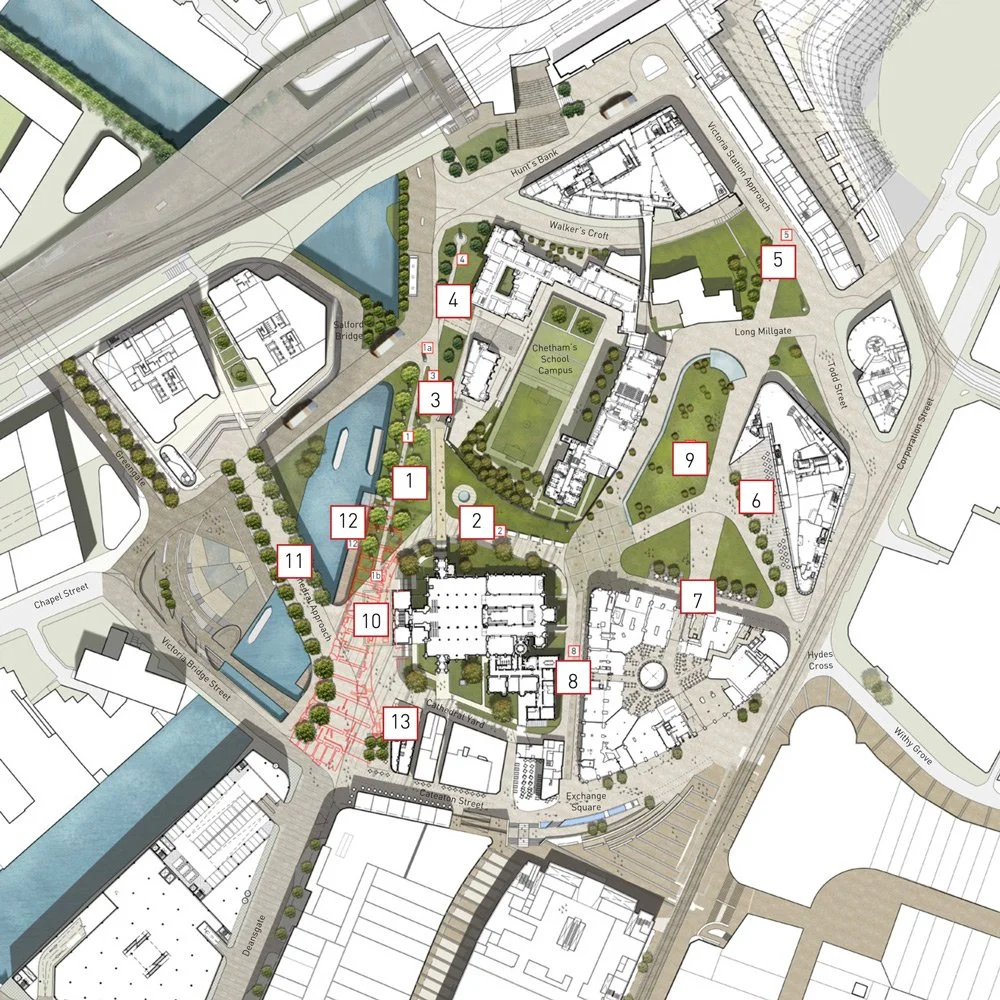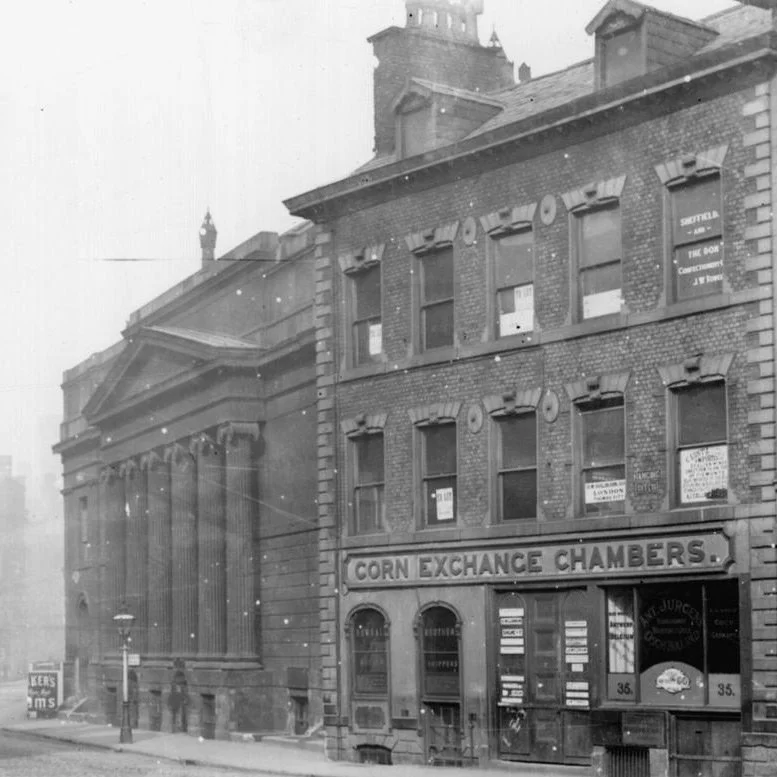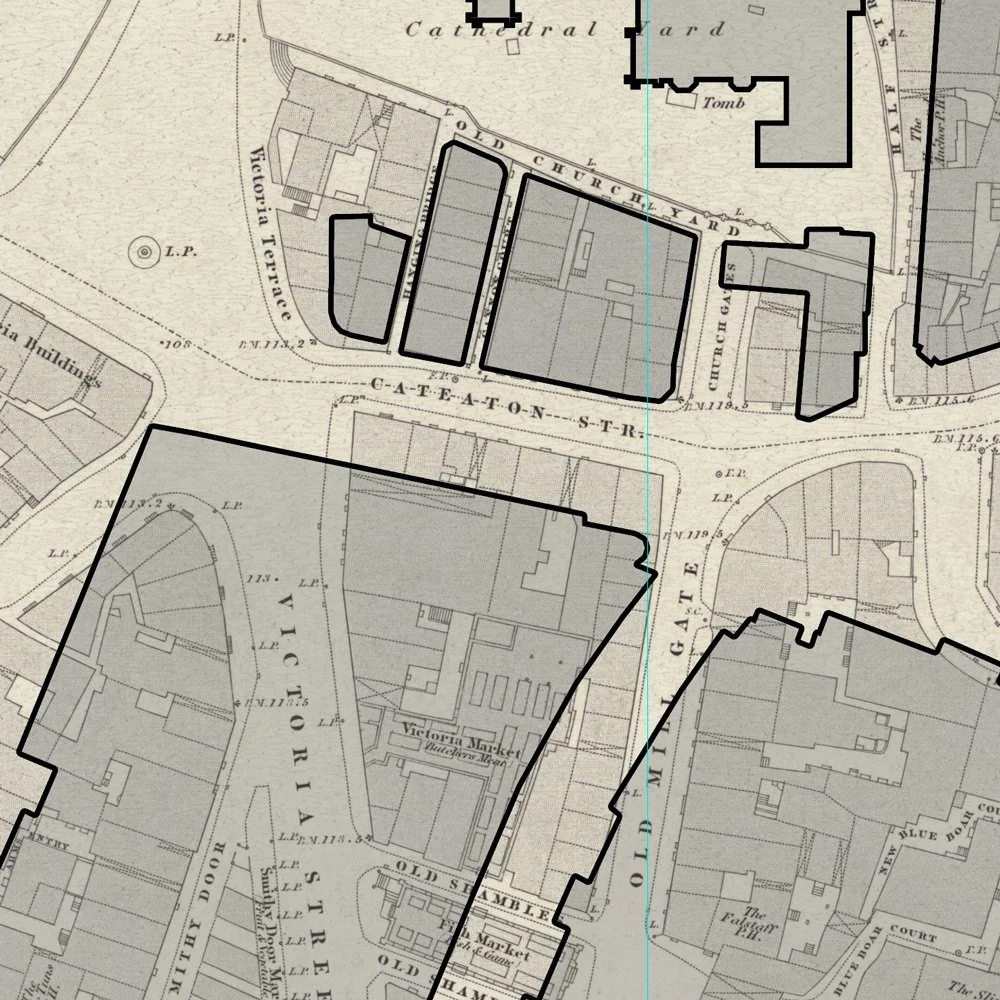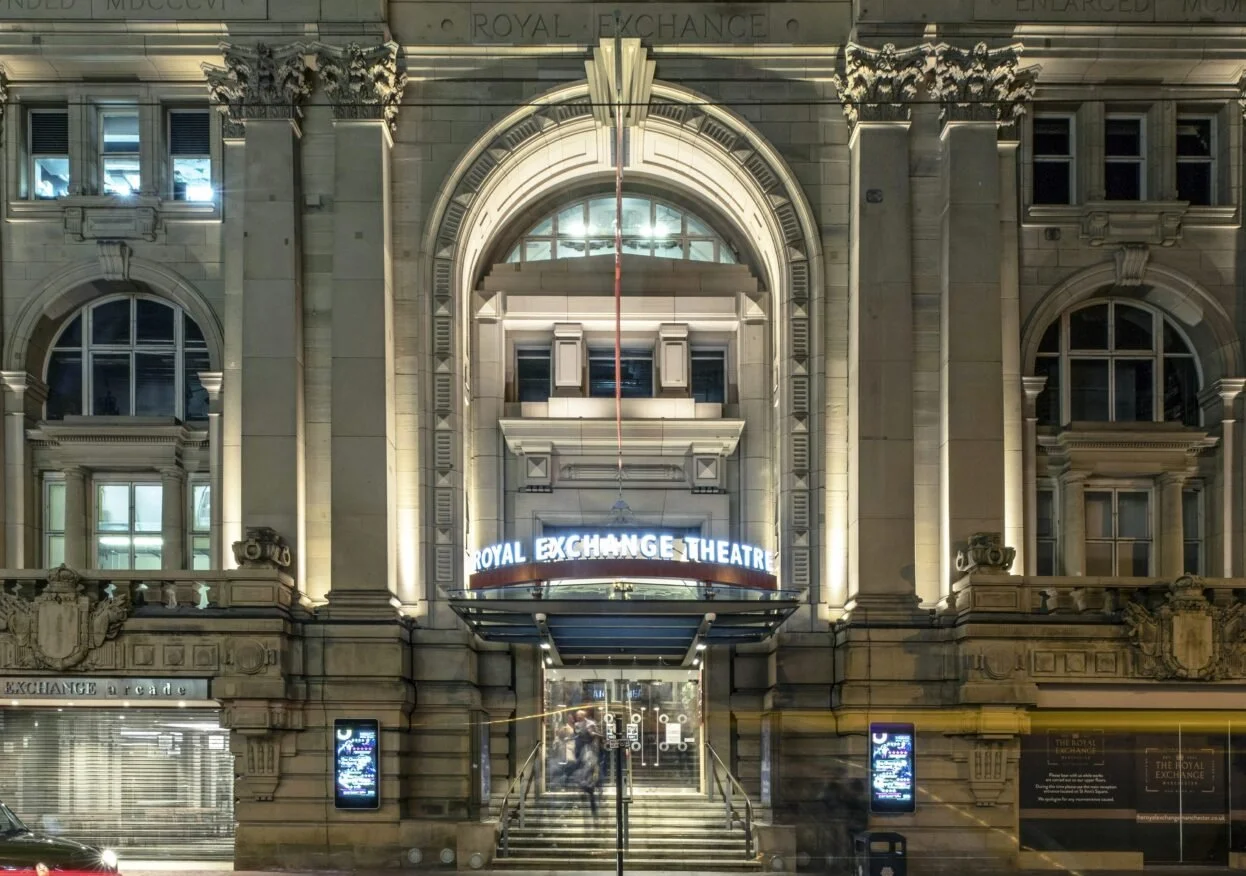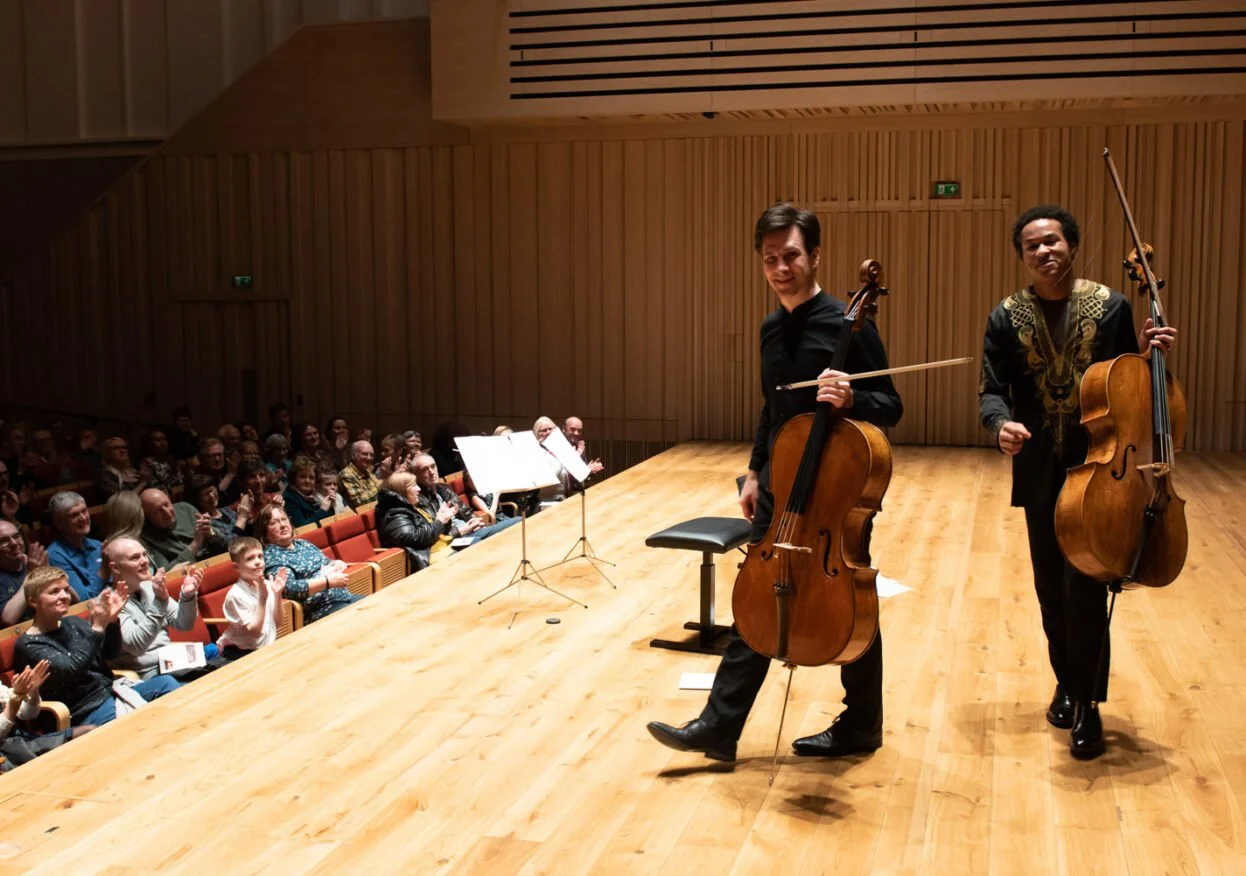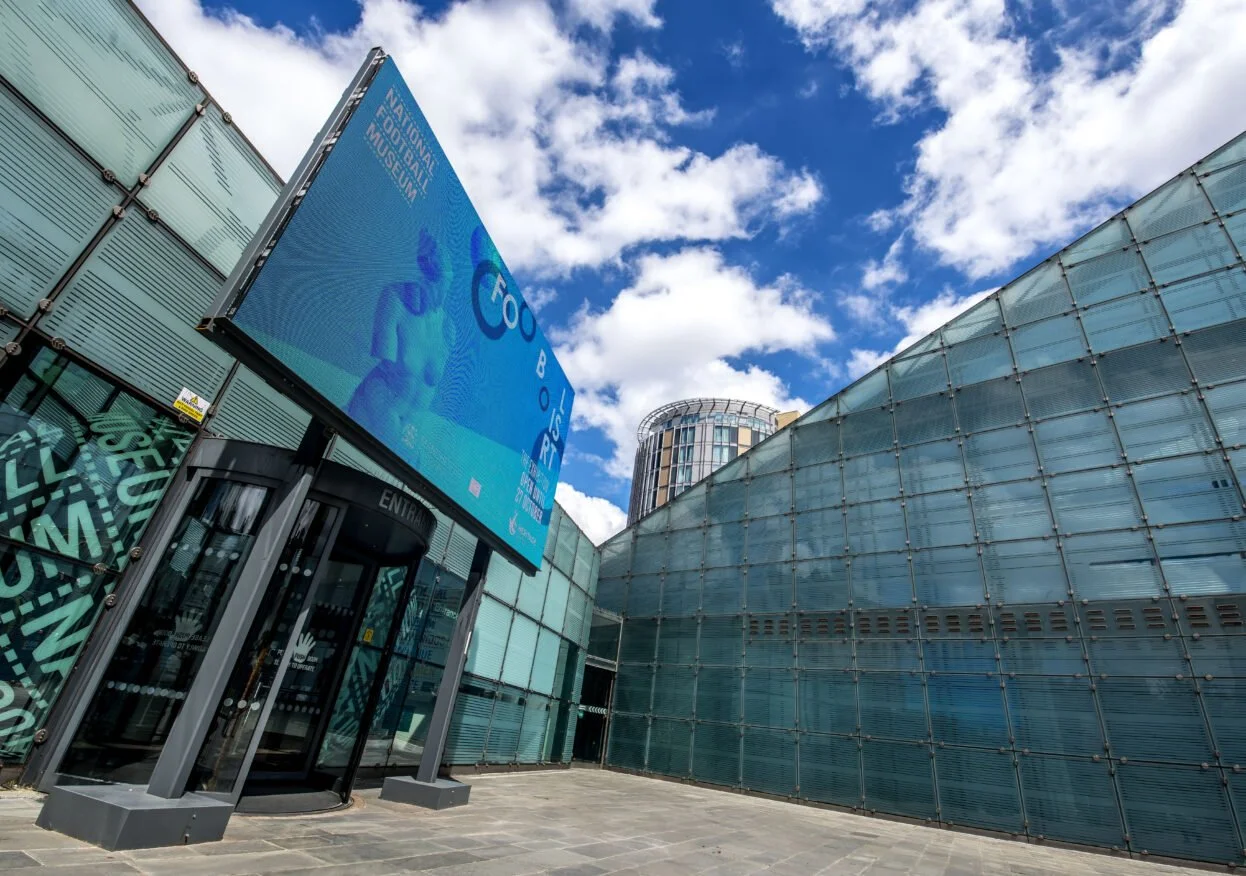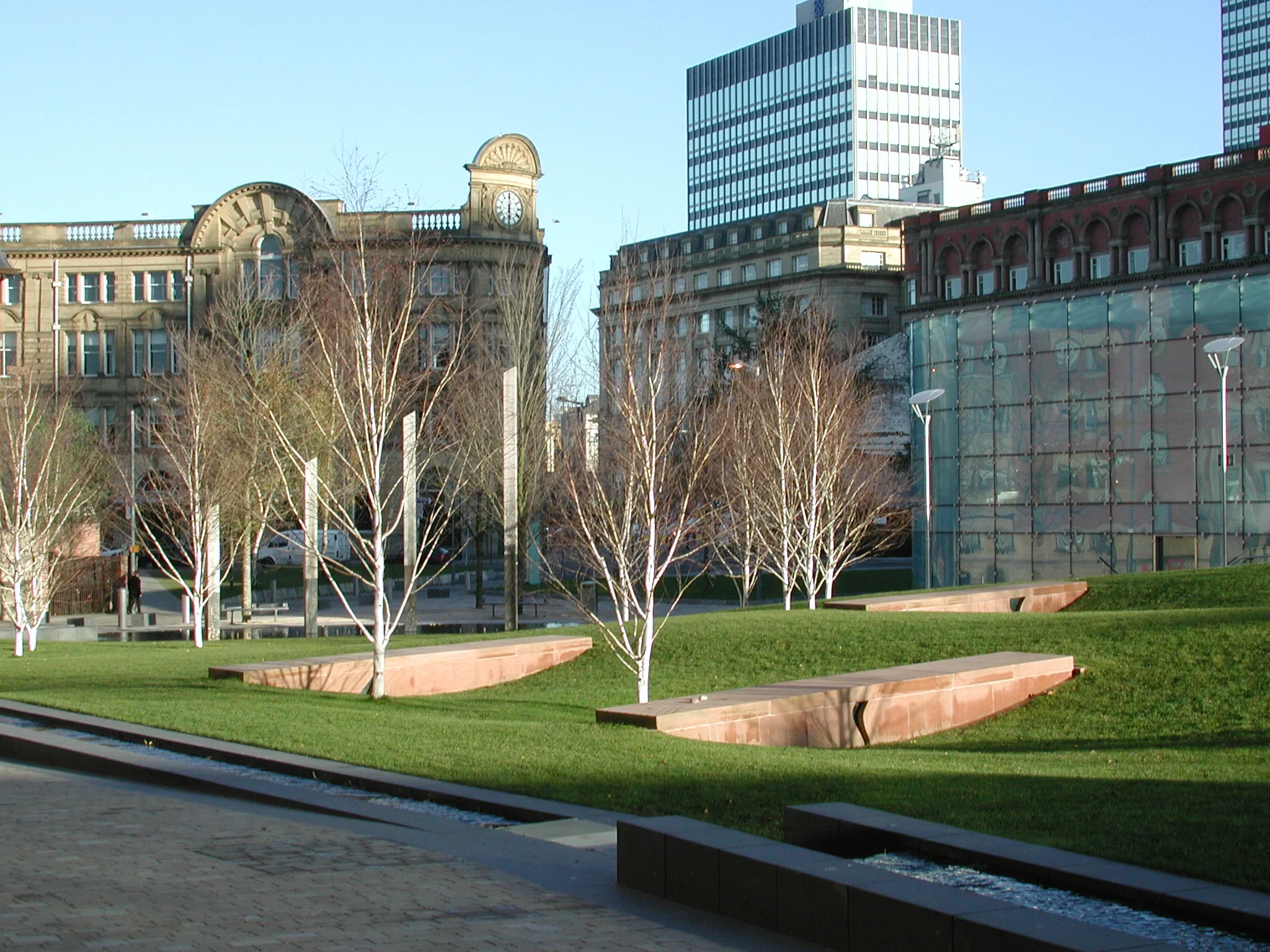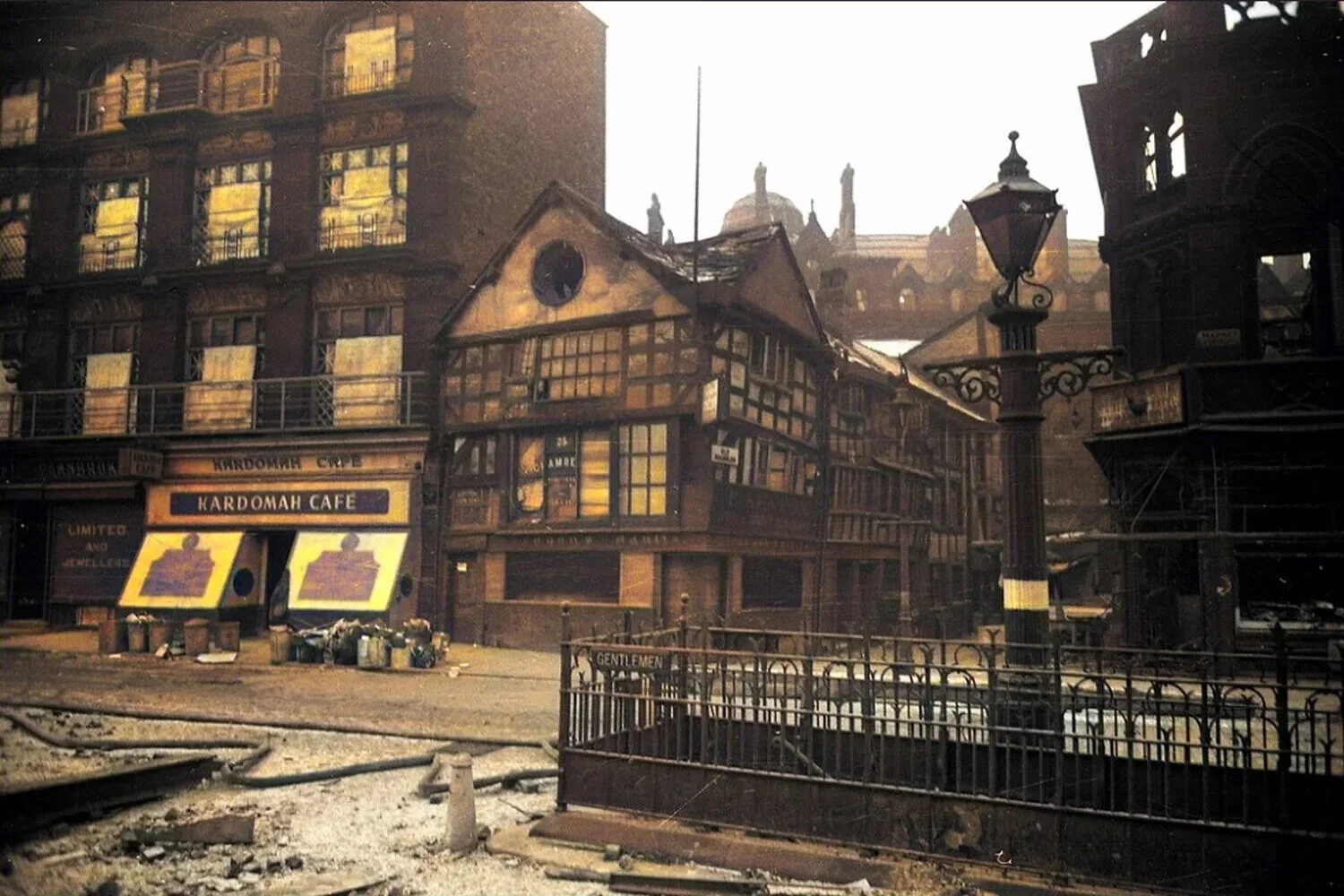
Shambles, Manchester
Image courtesy of Greater Manchester POLICE Archivesthe Medieval Quarter
[ OVERVIEW ]We’ll begin at Manchester’s original Market Place, once the hub of trading life, before tracing the city’s rise through the great halls of the Royal Exchange and the railway stations that powered its global reach. Along the way we’ll pass the Cathedral and the medieval buildings of Chetham’s, places that have witnessed centuries of change. This walk follows a city shaped by commerce, industry, and upheaval… where bombs and tragedies have scarred the streets but also brought people closer together. We’ll end back at Shambles Square, home to timber-framed survivors that have defied planners, disasters, and time itself, standing as symbols of Manchester’s resilience and reinvention.
Tour Details
Tour Duration
2 hours
Pricing
£20 per person
Please see our Tour Calendar
Next Dates
The Royal Exchange theatre, Manchester
Image courtesy of the Manchester Library ArchivesExchange station, Manchester
Image courtesy of the Manchester Library Archives[ HIGHLIGHTS ][1][2]A leisurely pace through the oldest streets in Manchester
Shambles Square
Having survived two near-miss bombings, these timber-framed buildings, now among the oldest in Manchester, have been on the move more than once. Originally built in 1552 as butchers’ shops in the Market Place, they stood at the heart of the town’s medieval trading hub. Over time, streets were widened and redeveloped, and after the 1996 IRA bomb the Shambles was dismantled, rotated, and carefully re-erected beside the Cathedral. Today they look timeless, but we’ll retrace their first location to uncover what a “real shambles” Manchester once was.
The Royal Exchange
What most people don’t realise is that the Royal Exchange we see today is just the latest in a series of exchanges. The very first was built in 1729 in Market Place. By 1809 the Exchange had moved here, and two more rebuilds followed as the cotton trade exploded. The present building, opened in 1921, was once described as the “largest room in the world,” where up to 11,000 merchants gathered to set prices that shaped global markets. Today it serves a very different purpose, but it’s easy to imagine the roar of voices and the hustle of deal-making that once filled the hall.
Glade of Light Memorial
We’'ll visit this tranquil pocket of the city that stands as a place of reflection, created to remember those who lost their lives in the 2017 attack. Set within a landscaped garden, its stone circle holds the names of the victims, surrounded by plants chosen to bloom at the time of year of the tragedy. More than a memorial, it has become a symbol of unity, where grief and resilience meet. The bees carved into its design echo Manchester’s long emblem of community and hard work… a reminder that even in the face of atrocity, the city comes together.
Victoria Station
Beneath the bustle of Victoria Station lies a very different story of Manchester. The station itself opened in 1844, a grand gateway for rail travel, but hidden under its concourse the River Irk still winds through dark brick tunnels, together with a few other hidden remnants that remind us of the lives lived here long before the trains arrived. Today, few passengers notice what lies below, yet this spot layers centuries of history… from medieval remains to Victorian engineering… all beneath the daily rush of commuters.
[3][4]Chetham's School
Chetham’s is the oldest surviving set of buildings in Manchester, dating back to the mid-15th century. Built in 1421 as a college for priests, it later became a hospital, then in 1653 was endowed by Humphrey Chetham as a free school and library. Remarkably, while the city around it has been reshaped many times, this site has kept much of its medieval plan: cloisters, stone walls, and oak interiors that still echo with centuries of learning. From monks to schoolboys to today’s young musicians, Chetham’s shows how purposes change even when the place endures.
Manchester Cathedral
Manchester Cathedral has stood at the heart of the city for centuries, its roots going back to a parish church founded in 1421 and raised to cathedral status in 1847. Though not the smallest cathedral, it is among the more compact in scale, yet its tall nave and intricate woodwork give it an unexpected grandeur. The building has grown through extensions and restorations, but has also endured: damaged by a German bomb in 1940 and again by the 1996 IRA bomb, each time it was rebuilt with care. Its footprint remains much as it was in medieval times, anchoring a city that has constantly reshaped itself around it.
Meeting Place
■
The terrace area outside Harvey Nichols, on New Cathedral Street, opposite Shambles Square.
At the top of the steps in Exchange Square there is a terrace area… we’ll meet there.
-
We’ll start the tour on time, if you’re running a little late, you might find us at the first stopping point between M&S and the Hugo Boss store further down New Cathedral Street.
-
A little over half-way through the tour we’ll be passing through Victoria train station where there are some toilets… there will be time for a quick break.
-
We’ll end the tour in the same place we started, next to Shambles Square. The length of the walk is approximately 2km.
What’s nearby
image credits
[1] Manchester Libraries Archives
[2] Simpson Haugh Architects
[3] Manchester Libraries Archives
[4] National library of scotland / ric frankland
